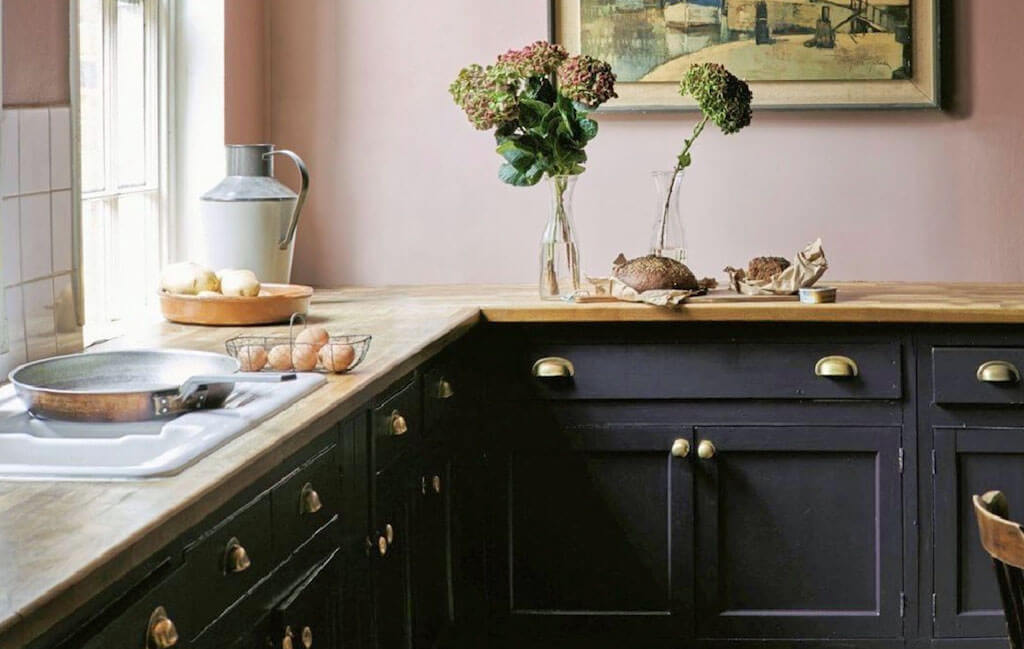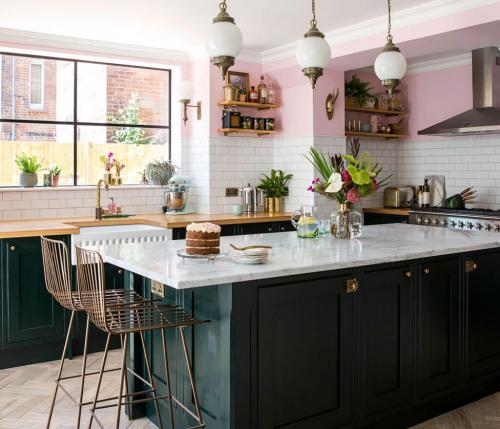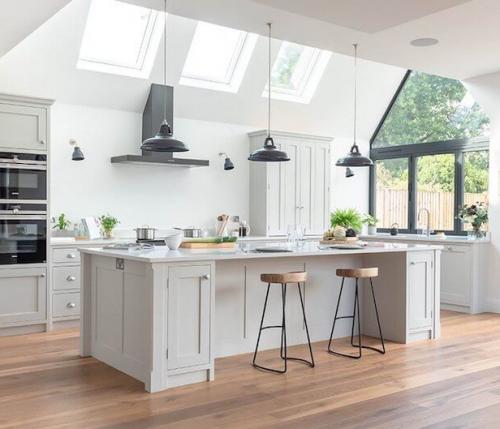You may not be familiar with the concept of "biophilia", but if you love the idea of bringing the outside in by fusing the natural world and your home environment, biophilic design will hugely appeal to you. Here’s a little snippet of what it’s all about:
Human connectivity with the natural environment is something we all crave, consciously or not, and the healing effect of nature is scientifically proven. Designer Oliver Heath, a high-profile advocate of biophilic design, explains: “Incorporating direct or indirect elements of nature into the built environment have been demonstrated through research to reduce stress, blood pressure levels and heart rates, whilst increasing productivity, creativity and self-reported rates of well-being.”
So why not take a leaf out of what Mother Nature has to offer and incorporate biophilia into the heart of your home? You can start by positioning a few lush house plants around the place. But when it comes to designing a new kitchen, some intentional biophilic additions can improve your sense of wellbeing and create a space that you will love to spend time in.
Here are four tips to show you how to go about it.
1. Authentic materials
The principles of biophilia are actually nothing new in kitchen design when you consider how open plan kitchen extensions have always been largely geared around making the most of the connection with the garden. “Whether it’s for a new-build or an extension, almost every architect’s brief now calls for a building to have a more meaningful connection to the outdoors. A close relationship between house and garden benefits both: gardens that have some of the amenities of a living space get more use, while interiors feel bigger and more airy when they open on to an al fresco living area,” says Kevin McCloud of Grand Designs.
Now, it’s not just about the location of the kitchen but about the materials used. Look at the current trend for plain or painted timber cabinetry, together with natural stone such as marble or granite worktops, perhaps teamed with slate flooring. There’s a wealth of natural product choice available to create unique kitchens for every taste and budget.
4 reasons why biophilic kitchens are the present and the future
If you love the idea of bringing the outside in, biophilic design will hugely appeal to you. Here are four tips to show you how to go about it
2. Natural colours
While interiors colour trends come and go, biophilic kitchen design will always be based around a natural colour palette. It’s the outdoor world inspiring the kitchen’s affiliation with nature through the use of colour. Perhaps it’s not surprising that Dulux chose Tranquil Dawn, a versatile shade of green “inspired by the morning sky, to help give homes the human touch”, as their Colour of the Year 2020.
When it comes to kitchen cabinetry, green is a big trend. Says London kitchen supplier Price Kitchens: “Green evokes Mother Nature, the Great Outdoors and all things fresh and natural. It’s the perfect backdrop for storing food and fresh produce and for preparing healthy meals. Green shades range from lighter ones such as mint green, apple green, sage, lime, grass and green tea, to bolder hues including olive, emerald and jade. Bring the colour of your herb or vegetable garden into your country kitchen or inject some green magic into your urban kitchen.”
3. Lighting & ventilation
Light and air are of course indispensable to life on Earth, so the more focus you can bring to incorporating these natural elements, the greater your kitchen’s impact on your wellbeing is likely to be. Don’t forget that your first port of call for natural light and ventilation should be your windows!
There are many stylish solutions for effective kitchen extraction on the market. Increasingly, these are designed with air quality sensors to keep pollutants, odours and steam at bay. Many kitchen unit manufacturers are looking at off-gassing to produce lower emission VOC chipboard for cabinetry.
Lighting is a key design principle in any interior space, and natural daylight is particularly important in biophilic design. Special rules apply to kitchens, according to decorative lighting expert Pooky. “In many homes a kitchen isn’t just a place for cooking. It’s also a dining room, a family room, a place for entertaining, even an office. So give yourself plenty of options for different atmospheres and activities – e.g. practical task lighting for cooking and working; softer mood lighting for dinner parties. That means having multiple light sources rather than relying on a single main overhead light.”
4. Home is the new normal
As the kitchen has moved centre stage in home design, this is where families now spend most of their time. It’s a multifunctional space for cooking and eating, socialising and working - and this major home trend shows no signs of going anywhere.
If anything, the 2020 pandemic and recent lockdown has added to a lifestyle change that has resulted in more people coming to re-evaluate the quality of their living space. And with the steep increase in home working now becoming part of the ‘new normal’, homes are having to provide more wellbeing benefits than ever before. Biophilic design in our kitchens and living spaces are therefore essential to keep us connected to the healthy, natural world.




 Workspace Design Show: 2024 UK Edition
Workspace Design Show: 2024 UK Edition  Open-air elegance: Claudio Bellini x Higold, the symphony of outdoor design
Open-air elegance: Claudio Bellini x Higold, the symphony of outdoor design  A stylish oasis for outdoor spaces
A stylish oasis for outdoor spaces  How to capture your property's best features
How to capture your property's best features